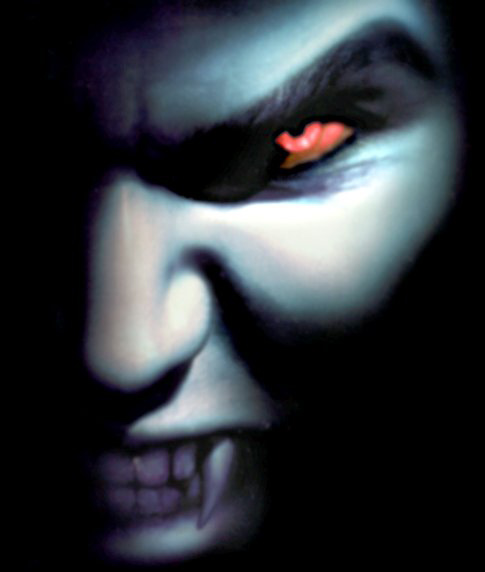If we take out the first part of that definition, “a hybrid of machine and organism”, we are left with the latter stating that a cyborg is a hybrid of social reality and fiction; Or, in other words, fantasy. Humans are always wondering what comes after our lives are over, after death. But, what about the select few people within society who believe in something else; something not entirely human, but not entirely farfetched either. As you probably figured from my picture, I’m referring to wizards and witches. Witches and wizards are human, but not only so. They are a combination of humanity and fantasy. Donna Haraway states that cyborgs are creatures of social reality (humans) and fiction (fantasy).
“By the late twentieth century, our time, a mythic time, we are all chimeras, theorized as fabricated hybrids of machine and organism; in short, we are cyborgs. The cyborg is a condensed image of both imagination and material reality”. (2191)
Vampires: A race of creatures that are neither dead nor undead. They are humans, physically dead to the world for their hearts do not beat, allowing the blood to pump within their body giving them the sustenance they need. Therefore, they feast on the blood of those who are “alive”, who’s hearts beat and circulate their blood and plasma, keeping them warm and awake to the world.
I’m taking the completely fictional side with this theory because I think it’s pretty cool and interesting. No one knows what happens after death, and not everyone believes in a life after death surrounded by pearly gates and clouds. But what is there to stop us from believing in these fictional creatures? Do they not fulfill, in part, the very definitions of “cyborgs”? Are they not hybrids of imagination and material reality? Of social reality and fiction?
Alright, so about this one: Iron Man.
Word Count: 443
Works Cited
Haraway, Donna. "A Manifesto for Cyborgs" The Norton Anthology of Theory and Criticism. W.W. Norton & Company; Second Edition. New York, 2001. Pages 2190 - 2220. Print








